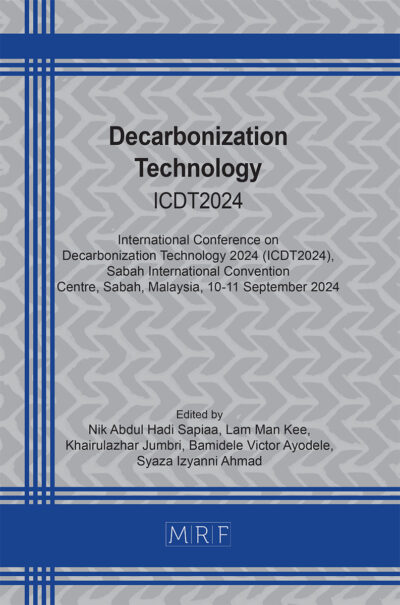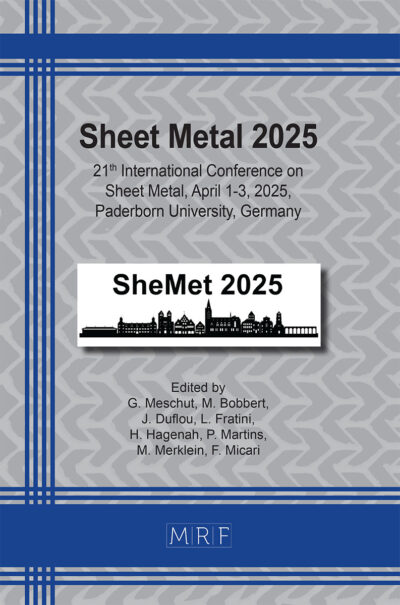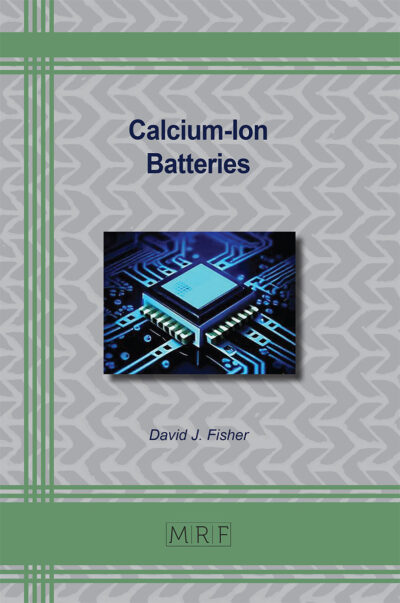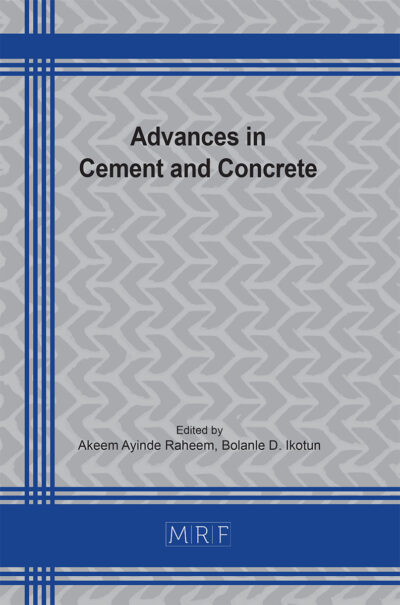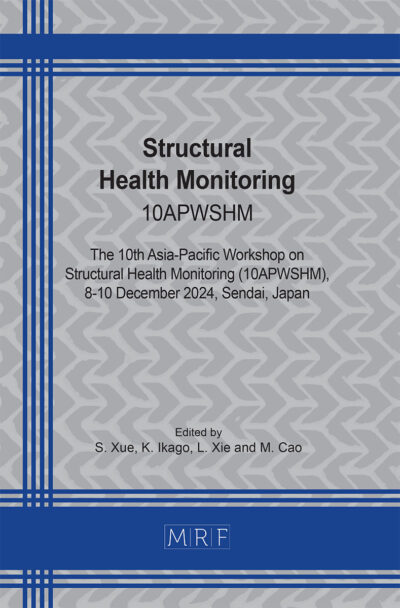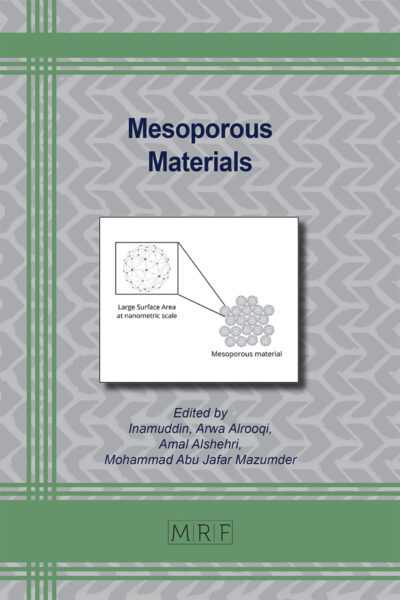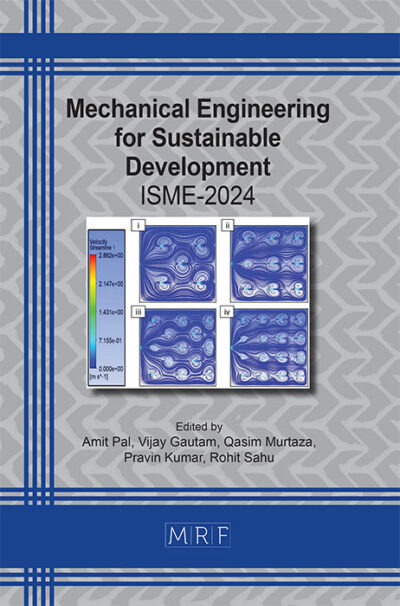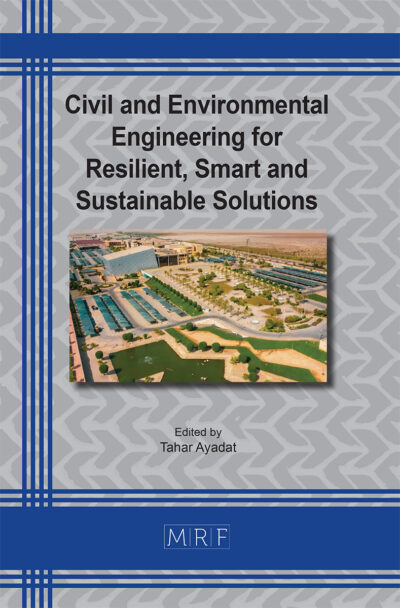Enhancing Co2 adsorption in sandstone formation using fly ash nanoparticles: A geo-sequestration approach
Ahmed Abdulla Elryes, Berihun Mamo Negash, Nur Asyraf Md Akhir, Faizan Ali, Rubaya Tasnin Mim
Abstract. A primary environmental concern making global warming worse is the continuous release of CO2 into the atmosphere. One feasible approach to this issue is the geo-sequestration of CO2 involving CO2 adsorption and sequestration in saline aquifer formations. This study explores the possibility of improving CO2 adsorption in sandstone formations by using fly ash nanoparticles, a by-product. Pre- and post-nano-treated Berea sandstone samples are tested for CO2 adsorption at pressures ranging from 0.1 to 10 MPa, temperature of 40°C, and salinity of 10 wt% NaCl. High-pressure-temperature volumetric CO2 adsorption equipment was used to quantify CO2 adsorption under reservoir conditions. The findings reveal that Xanthan Gum (XG) polymer concentration of 0.04 wt% stabilized and well-suspended the fly ash nanofluid, exhibiting a zeta potential below -32.2 mV. The findings revealed that the total CO2 adsorption was 45.07 mmol/g for the nano-treated sample and 41.56 mmol/g for the untreated sample. Additionally, the fly ash nano-treated sample demonstrated superior CO2 adsorption across all pressure points. Specifically, when CO2 reached a supercritical state over 7.38 MPa, the nano-treated sample showed a maximum CO2 adsorption of 39.17 mmol/g, while untreated samples reached 36.40 mmol/g. Adsorption isotherm analysis revealed that the Toth model provided the best fit for the experimental data, with an R2 value of 0.9708, indicating heterogeneous and multilayer adsorption behavior. The isotherm analysis suggests that multilayer adsorption, driven by van der Waals forces, was predominant due to the energy favorability of forming multiple adsorption layers rather than a monolayer. The study outcome suggests the feasibility of fly ash nanoparticles as a promising nanofluid to improve CO2 adsorption in CO2 geo-sequestration projects.
Keywords
CO2 Adsorption, Fly Ash Nanoparticles, Nanofluid Technology, Sandstone Formation, Carbon Geo-Sequestration
Published online 4/25/2025, 7 pages
Copyright © 2025 by the author(s)
Published under license by Materials Research Forum LLC., Millersville PA, USA
Citation: Ahmed Abdulla Elryes, Berihun Mamo Negash, Nur Asyraf Md Akhir, Faizan Ali, Rubaya Tasnin Mim, Enhancing Co2 adsorption in sandstone formation using fly ash nanoparticles: A geo-sequestration approach, Materials Research Proceedings, Vol. 53, pp 67-73, 2025
DOI: https://doi.org/10.21741/9781644903575-5
The article was published as article 5 of the book Decarbonization Technology
![]() Content from this work may be used under the terms of the Creative Commons Attribution 3.0 license. Any further distribution of this work must maintain attribution to the author(s) and the title of the work, journal citation and DOI.
Content from this work may be used under the terms of the Creative Commons Attribution 3.0 license. Any further distribution of this work must maintain attribution to the author(s) and the title of the work, journal citation and DOI.
References
[1] W. Yu, T. Wang, A. H. A. Park, and M. Fang, “Review of liquid nano-absorbents for enhanced CO2 capture,” Nanoscale, vol. 11, no. 37, pp. 17137–17156, Sep. 2019. https://doi.org/10.1039/C9NR05089B
[2] T. D. Rathnaweera and P. G. Ranjith, “Nano-modified CO2 for enhanced deep saline CO2 sequestration: A review and perspective study,” Earth Sci Rev, vol. 200, p. 103035, Jan. 2020. https://doi.org/10.1016/J.EARSCIREV.2019.103035
[3] S. Zhang, Y. Shen, L. Wang, J. Chen, and Y. Lu, “Phase change solvents for post-combustion CO2 capture: Principle, advances, and challenges,” Appl Energy, vol. 239, pp. 876–897, Apr. 2019. https://doi.org/10.1016/J.APENERGY.2019.01.242
[4] M. Mehdipour, P. Keshavarz, and M. R. Rahimpour, “Rotating liquid sheet contactor: A new gas-liquid contactor system in CO2 absorption by nanofluids,” Chemical Engineering and Processing – Process Intensification, vol. 165, p. 108447, Aug. 2021. https://doi.org/10.1016/J.CEP.2021.108447
[5] H. Rashidi and S. Mamivand, “Experimental and numerical mass transfer study of carbon dioxide absorption using Al2O3/water nanofluid in wetted wall column,” Energy, vol. 238, p. 121670, Jan. 2022. https://doi.org/10.1016/J.ENERGY.2021.121670
[6] Z. Zhang, J. Cai, F. Chen, H. Li, W. Zhang, and W. Qi, “Progress in enhancement of CO2 absorption by nanofluids: A mini review of mechanisms and current status,” Renew Energy, vol. 118, pp. 527–535, Apr. 2018. https://doi.org/10.1016/J.RENENE.2017.11.031
[7] G. M. Phong, R. M. Pilus, A. Mustaffa, L. Thangavel, and N. M. Mohamed, “Relationship between fly ash nanoparticle-stabilized-foam and oil production in core displacement and simulation studies,” Fuel, vol. 266, p. 117033, Apr. 2020. https://doi.org/10.1016/J.FUEL.2020.117033
[8] M. Rezaee, S. M. Hosseini-Nasab, J. Fahimpour, and M. Sharifi, “New Insight on improving foam stability and foam flooding using fly-ash in the presence of crude oil,” J Pet Sci Eng, vol. 214, p. 110534, Jul. 2022. https://doi.org/10.1016/J.PETROL.2022.110534
[9] W. Wang et al., “Fly Ash Nanoparticle-Stabilized Emulsions for Improve Mobility Control Application,” Society of Petroleum Engineers – SPE EuropEC – Europe Energy Conference featured at the 83rd EAGE Annual Conference and Exhibition, EURO 2022, Jun. 2022. https://doi.org/10.2118/209646-MS
[10] A. María Díez-Pascual et al., “Effect of Silica Nanoparticles in Xanthan Gum Solutions: Evolution of Viscosity over Time,” 2022. https://doi.org/10.3390/nano12111906
[11] D. L. Buitrago-Rincon et al., “Silica Nanoparticles in Xanthan Gum Solutions: Oil Recovery Efficiency in Core Flooding Tests,” Nanomaterials, vol. 13, no. 5, Mar. 2023. https://doi.org/10.3390/NANO13050925
[12] J. Wang, X. Yang, J. J. Klemeš, K. Tian, T. Ma, and B. Sunden, “A review on nanofluid stability: preparation and application,” Renewable and Sustainable Energy Reviews, vol. 188, p. 113854, Dec. 2023. https://doi.org/10.1016/J.RSER.2023.113854


